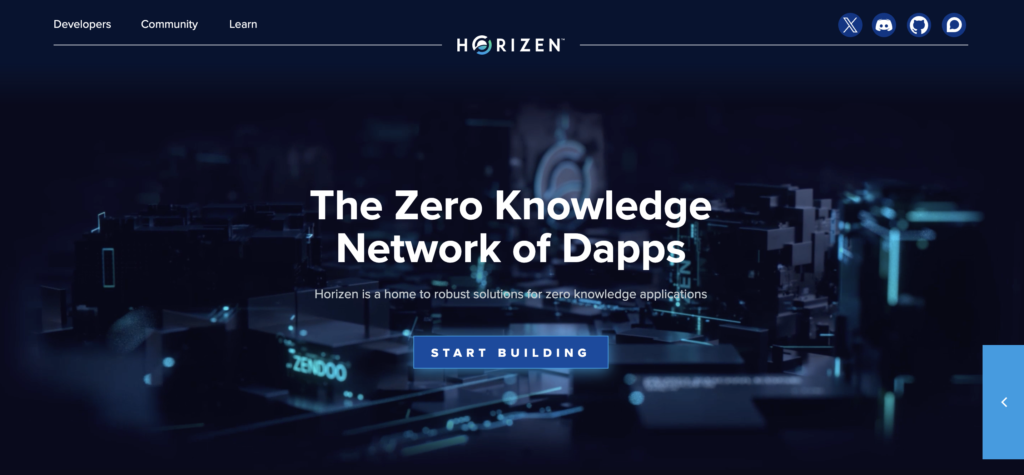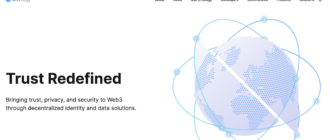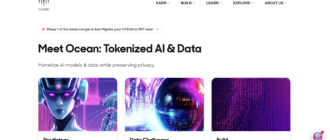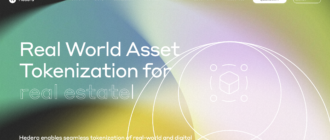This article delves into Horizen, a groundbreaking blockchain platform, and its native cryptocurrency, ZEN. Horizen has evolved from its origins as ZenCash to a multifaceted ecosystem that leverages advanced cryptographic technologies to enhance privacy and scalability. The discussion will encompass the project’s architecture, tokenomics, ecosystem components, growth potential, and future outlook. By exploring these aspects, readers will gain a comprehensive understanding of Horizen’s innovative contributions to the blockchain landscape and its implications for the future of decentralized applications and secure transactions.

What is Horizen?
Horizen is a blockchain platform designed to enhance privacy, scalability, and decentralization. Initially launched as ZenCash, Horizen has evolved into a comprehensive ecosystem that includes secure messaging, anonymous publishing, and decentralized applications. Horizen utilizes advanced cryptographic technologies, including zk-SNARKs (Zero-Knowledge Succinct Non-Interactive Arguments of Knowledge), to ensure privacy and security for its users. The platform features a unique multi-tiered node system, including Secure Nodes and Super Nodes, which support its scalability and security objectives. By offering a robust framework for privacy-centric applications, Horizen aims to provide individuals and enterprises with the tools needed to maintain data privacy and secure digital interactions.
History of Horizen
Horizen, originally known as ZenCash, was founded in May 2017 as a fork of the ZClassic blockchain. The rebranding to Horizen occurred in August 2018 to reflect its expanded mission beyond just a privacy coin. Since its inception, Horizen has achieved several significant milestones:
- Launch of ZenCash (May 2017): ZenCash was introduced as a privacy-focused cryptocurrency, leveraging the security features of zk-SNARKs from Zcash.
- Rebranding to Horizen (August 2018): The project rebranded to Horizen to highlight its broader scope, including various privacy-focused applications and a larger ecosystem.
- Introduction of Sidechains (2019): Horizen developed its sidechain technology, allowing for scalable and interoperable blockchain applications.
- Expansion of Node Network (2019-2020): Horizen established one of the largest node networks in the industry, with over 22,000 active nodes, enhancing the network’s robustness and decentralization.
- Launch of Horizen EON (2023): This fully EVM-compatible smart contracting platform marked a significant step in integrating Ethereum-compatible applications into the Horizen ecosystem.
- Ongoing Development (2024): Horizen continues to innovate with the development of New Horizen, a proof verification network aimed at improving scalability and efficiency through a modular approach and Zero-Knowledge technology.
Through these milestones, Horizen has consistently advanced its technology and ecosystem, positioning itself as a leader in privacy and scalability within the blockchain industry.
How Does Horizen Work?
Horizen operates on a sophisticated blockchain architecture that emphasizes privacy, scalability, and decentralization. The project leverages several advanced technologies to achieve its objectives, distinguishing itself from other blockchain platforms.
Underlying Technologies
Horizen’s ecosystem is built on a combination of Zero-Knowledge Proofs (zk-SNARKs), sidechains, and a multi-tiered node system. Zero-Knowledge Proofs allow for the verification of transactions without revealing any details about the transaction itself, ensuring high levels of privacy. Sidechains enable Horizen to scale effectively by allowing multiple blockchains to operate in parallel, each with its own consensus rules and applications, thereby offloading the main chain and preventing congestion. This modular approach also enhances interoperability and flexibility.
Consensus Mechanism
Horizen utilizes a Proof-of-Work (PoW) consensus mechanism, similar to Bitcoin, but with specific enhancements tailored to its network. Miners validate transactions and secure the network by solving complex mathematical puzzles. The PoW mechanism not only ensures security but also prevents double spending and maintains the integrity of the blockchain.
In addition to the standard PoW, Horizen incorporates a unique node system comprising Secure Nodes and Super Nodes. These nodes enhance network security, stability, and performance. Secure Nodes require a stake of 42 ZEN and use TLS encryption for secure communications. Super Nodes, requiring a stake of 500 ZEN, provide additional functionalities such as hosting sidechains and supporting advanced network features.
Blockchain and Consensus Details
Horizen’s main blockchain, initially a fork of ZClassic, uses the Equihash algorithm for its PoW consensus. Blocks are mined approximately every 2.5 minutes, with a current block reward of 7.5 ZEN. The reward distribution is structured to support both miners and the broader network ecosystem: 70% goes to miners, 20% is split between Secure Nodes and Super Nodes, and 10% funds the Horizen team and development efforts.
The introduction of sidechains, such as those using the Zendoo protocol, allows for decentralized and verifiable cross-chain transfers. This protocol leverages recursive zk-SNARKs to ensure the correctness and privacy of sidechain transactions without burdening the main chain with extensive data.
Horizen’s approach to combining zk-SNARKs, PoW, and a robust node infrastructure sets it apart from many other blockchain projects. This combination provides a highly secure, private, and scalable platform suitable for a wide range of applications, from secure messaging and publishing to complex decentralized applications.
By integrating these technologies, Horizen aims to create a versatile and secure blockchain environment that can address the evolving needs of privacy-conscious users and enterprises in the blockchain space.
Tokenomics of Horizen
Horizen’s native cryptocurrency, ZEN, functions as a coin rather than a token. As a mineable Proof-of-Work (PoW) coin, ZEN is integral to the Horizen ecosystem, facilitating transactions and serving as the backbone for various applications within the platform.
Emission Model
ZEN has a fixed total supply of 21 million coins. The initial block reward was set at 12.5 ZEN and follows a halving schedule approximately every four years, or every 840,000 blocks. This halving mechanism reduces the block reward to 6.25 ZEN after the first halving, and continues to halve over time, similar to Bitcoin’s emission model. This controlled supply mechanism is designed to create scarcity, potentially increasing the value of ZEN as demand grows while supply incrementally decreases.
Circulating Supply and Market Dynamics
As of now, the circulating supply of ZEN is approximately 14.47 million coins, with the remaining coins gradually entering circulation through mining rewards. ZEN is actively traded on major cryptocurrency exchanges such as Binance, Coinbase, and KuCoin, with its price fluctuating based on market dynamics. Recently, ZEN has been trading around $8.52, reflecting its market valuation and liquidity.
Reward Distribution
The block reward distribution for ZEN is structured to support both network security and development. Currently, 60% of the block reward is allocated to miners, 20% to the Horizen treasury, and 20% to node operators. This model incentivizes miners to secure the network while ensuring adequate funding for ongoing development and maintenance through the treasury, and supports the extensive node infrastructure that enhances network reliability and security.
Utility and Governance
ZEN plays a critical role in the Horizen ecosystem, not only as a medium of exchange but also as a utility coin powering transactions across Horizen’s sidechains and decentralized applications (dApps). With the introduction of Horizen EON, an EVM-compatible smart contracting platform, ZEN’s utility has expanded to include gas fees for smart contracts and staking on the network. This integration fosters a robust economic model that aligns user incentives with network participation.
Future Prospects
As Horizen continues to evolve, the tokenomics of ZEN are expected to adapt, particularly with ongoing developments in the ecosystem such as the implementation of advanced sidechain technologies and further decentralization through governance mechanisms like the Horizen DAO. These advancements aim to enhance the scalability, security, and utility of ZEN, reinforcing its position within the broader blockchain industry.
Where to Buy Horizen (ZEN)
ZEN, the native cryptocurrency of Horizen, can be purchased on several major cryptocurrency exchanges. Here are some of the primary platforms where you can buy ZEN:
- Binance: One of the largest and most reputable cryptocurrency exchanges, Binance offers ZEN trading pairs such as ZEN/USDT and ZEN/BTC.
- HTX (formerly Huobi): This exchange provides a wide range of trading pairs and supports ZEN, making it a reliable option for buying and selling the cryptocurrency.
- MEXC: Known for its user-friendly interface and diverse payment options, MEXC supports ZEN purchases through credit/debit cards, bank transfers, and P2P trading.
- Bybit: Another popular exchange, Bybit offers various trading options for ZEN, including spot trading.
- KuCoin: This exchange supports ZEN/USDT trading pairs and is known for its robust security measures and liquidity.
These exchanges provide multiple payment methods, including credit/debit cards, bank transfers, and peer-to-peer trading, ensuring a smooth and secure buying process.
Where to Store Horizen (ZEN)
Storing your ZEN securely is crucial for protecting your assets. Here are some recommended wallets for storing Horizen:
Software Wallets
- Sphere by Horizen: The official wallet for Horizen, Sphere by Horizen, offers full node capabilities and a user-friendly interface for managing your ZEN.
- Coinomi: A multi-asset wallet that supports ZEN along with many other cryptocurrencies, providing robust encryption and user control over private keys.
- Exodus: A popular desktop and mobile wallet that supports ZEN and offers a built-in exchange for trading cryptocurrencies directly within the app.
Hardware Wallets
- Ledger: Ledger hardware wallets, such as Ledger Nano S and Ledger Nano X, provide top-tier security for your ZEN by storing your private keys offline.
- Trezor: Another reputable hardware wallet, Trezor, offers secure storage for ZEN and other cryptocurrencies, protecting your assets from online threats.
Using these wallets, you can store ZEN securely while having access to advanced features like staking and transaction management. Always ensure that your wallet software is up to date to benefit from the latest security features and improvements.
Project Prospects
Horizen’s growth prospects are anchored in its advanced technology and strategic vision focused on privacy, scalability, and decentralization. The project’s momentum is driven by several key factors:
Basis for Growth
Horizen leverages zero-knowledge proofs (zk-SNARKs) and a robust sidechain architecture to ensure privacy and scalability. These technologies allow Horizen to support high-throughput applications and maintain security, distinguishing it from many other blockchain projects. The introduction of the Horizen EON platform, which is fully EVM-compatible, expands its reach into the DeFi and NFT spaces, further enhancing its ecosystem’s utility and attractiveness to developers.
Clients and Partners
Horizen’s clients and partners span a diverse range of industries and use cases. Some notable partners include:
- IOHK: Collaborated on scaling solutions using blockDAG protocols.
- Dragonchain: Partnership focused on integrating Horizen’s privacy features into enterprise solutions.
- CrayPay: Partnership to enable ZEN payments in everyday transactions, integrating with Horizen’s app to facilitate crypto payments at numerous retailers.
These partnerships not only enhance the utility of the ZEN cryptocurrency but also validate Horizen’s technology and vision, attracting more clients and developers to its ecosystem.
Growth Forecast
Horizen is well-positioned for substantial growth. The ongoing development of its sidechain technology, aimed at increasing transaction throughput and reducing costs, sets the stage for broader adoption. The expansion into DeFi with Horizen EON will likely attract more developers and projects, driving up demand for ZEN. The project’s strategic focus on privacy and scalability aligns with the growing demand for secure and efficient blockchain solutions.
Analysts predict that Horizen’s robust technological foundation and strategic partnerships will support steady growth in the coming years. The project’s emphasis on decentralized governance and community involvement through its DAO structure also bodes well for its long-term sustainability and adoption.
Project Ecosystem
The Horizen ecosystem is comprehensive and designed to support a wide range of applications, from secure communications to decentralized finance. Key components of the ecosystem include:
- Sphere by Horizen: The official wallet and platform for managing ZEN and interacting with Horizen services.
- Zendoo: A sidechain protocol that allows for the creation of scalable and secure blockchains linked to the Horizen mainchain.
- Horizen EON: An EVM-compatible platform enabling smart contract functionality, making it easier to deploy decentralized applications.
- ZEN: The native cryptocurrency, integral to all transactions within the Horizen ecosystem, used for staking, transaction fees, and as a medium of exchange.
The ecosystem’s design ensures that Horizen can support a wide range of applications, from finance and communications to complex decentralized applications, making it a versatile platform in the blockchain space. The continuous development and integration of new technologies will likely expand Horizen’s ecosystem further, enhancing its appeal and functionality for both users and developers.
Conclusion
Horizen stands out in the blockchain industry due to its commitment to privacy, security, and scalability. The project’s strategic development and robust technological infrastructure underscore its potential to drive significant advancements in the decentralized application space. As Horizen continues to evolve and expand its ecosystem, it remains well-positioned to address the growing demand for privacy-centric solutions in the digital age. The insights provided in this article offer a detailed perspective on Horizen’s journey and its future trajectory, highlighting the project’s capacity to reshape the blockchain sector.






